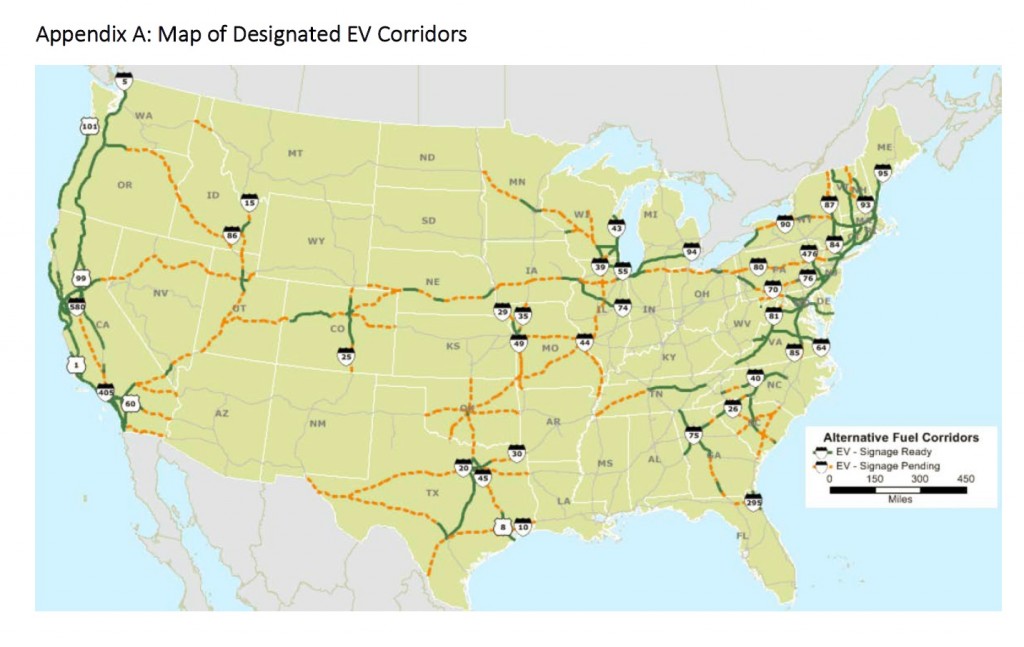Electric-car charging, hydrogen infrastructure, and penalties for greenhouse-gas-offending states were included in the long-anticipated U.S. House of Representatives transportation bill, released Wednesday.
The INVEST in America Act (Investing in a New Vision for the Environment and Surface Transportation) would allocate $494 billion over five years, and it includes some comparable provisions.
To put one word for the House bill versus the Senate transportation infrastructure bill passed last July, it’s more—more money, and more climate accountability. The House bill authorizes $494 billion over five years, while the Senate bill kept spending to $287 billion.
The Senate bill allowed up to $1 billion to go toward charging and alternate-fuel infrastructure projects. The House bill would step that up to $350 million annually for fiscal years 2022 through 2025—including grants toward electric vehicle charging and hydrogen fueling infrastructure, with funding focused on Alternative Fuel Corridors and “projects that demonstrate the most effective emissions reductions.”

Federal Highway Administration map of designated electric-car charging corridors across U.S., 2016
The House bill, released by Representative Peter DeFazio, Democrat, of Oregon, requires a new emphasis on lowering pedestrian and bicyclist fatalities. It also reframes the Federal transit program to emphasize the frequency and ridership of public transportation and incentivizes higher domestic content in transit purchasing. Green-energy details include incentives for transit electrification, and the introduction of a 2.5% bonus for electric buses using domestic battery cells.
An authorization of $29.3 billion over five years for Amtrak—with an earlier delivery for the bulk of those funds in recognition of coronavirus challenges—is also part of the bill.
One of the more controversial measures might be its requirement of a new greenhouse gas performance measure for transit projects. Under the rule, a CO2 assessment would bring benefits for states making the most progress and a requirement that poor-performing states invest 10% of their surface transportation program on projects helping to reduce carbon pollution.
Nearly one third of total U.S. greenhouse gas emissions are related to transportation, and close to 60 percent of that comes from passenger vehicles.
Democrats likely have enough support to push the bill through the House—with some indication that it’s a party-agenda matter. Although on the Senate side, the bill would need to be reconciled with something very different in conference committee.

Minneapolis METRO light rail, by Flickr user Michael Hicks (Used under CC License)
Senator John Barrasso, the Wyoming Republican who led development on that 2019 legislation, told the Washington Examiner that “House Democrats’ love affair with red tape and the Green New Deal is getting in the way of getting America back to work.” The Senator said in a different statement quoted by several outlets that the legislation must help the entire country, “not just select urban centers.”
"The pandemic has exposed vulnerabilities in our economy, from an outsized reliance on China for our future transportation technology to a lack of diversity in our transportation fuels," said Robbie Diamond, the president and CEO of
Securing America’s Future Energy (SAFE), which applauded many of the bill's provisions. "It is vital for our economic and national security that we scale up our investments in these technologies as soon as possible.”
U.S. Chamber of Commerce VP for transportation and infrastructure Ed Mortimer told Politico that the bill needs to address highway project streamlining—and that the carbon-based performance measures were “overreaching.”
The House isn’t due to vote on the bill until July 1. Then Congress needs to move fast—pardon the pun—to replace what’s called the Fixing America’s Surface Transportation (FAST) Act, adopted in 2015 but expiring on September 30, 2020.
Although not all aspects of the House bill are likely to make it through, given the inclusion of electric-car charging infrastructure in both bills this time it’s likely not one of the details to fall to the cutting floor.













